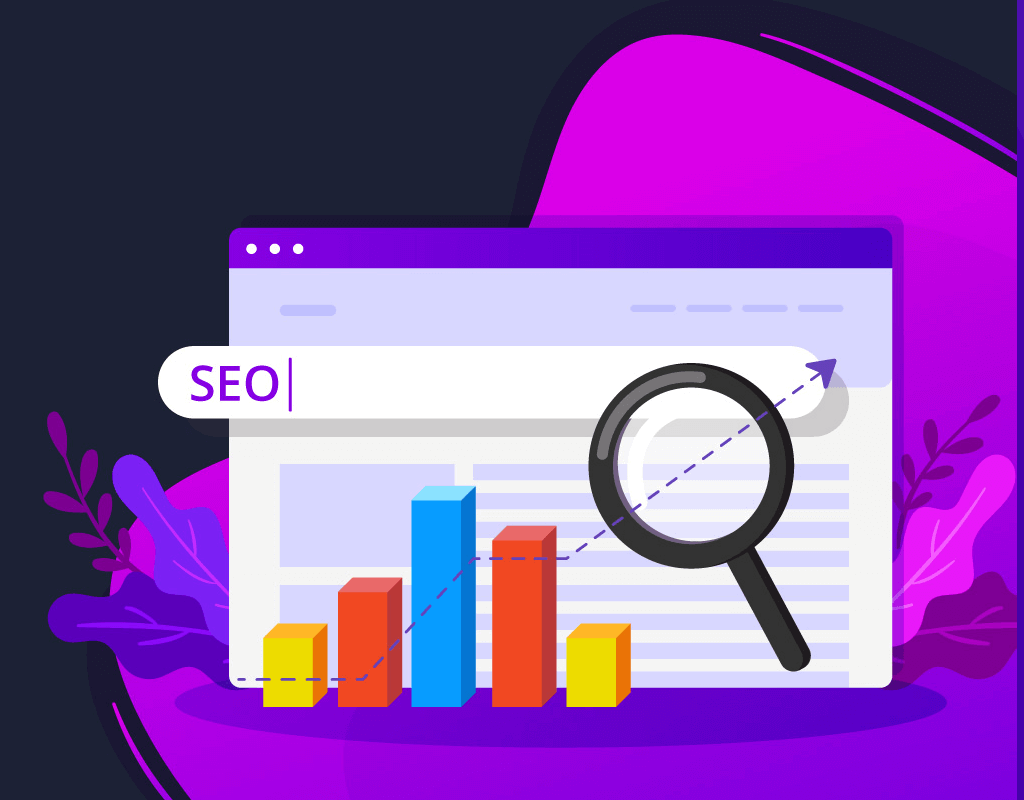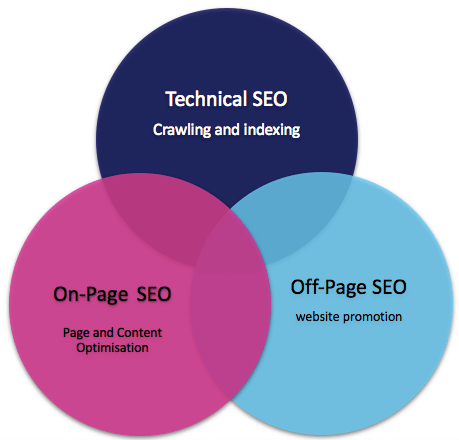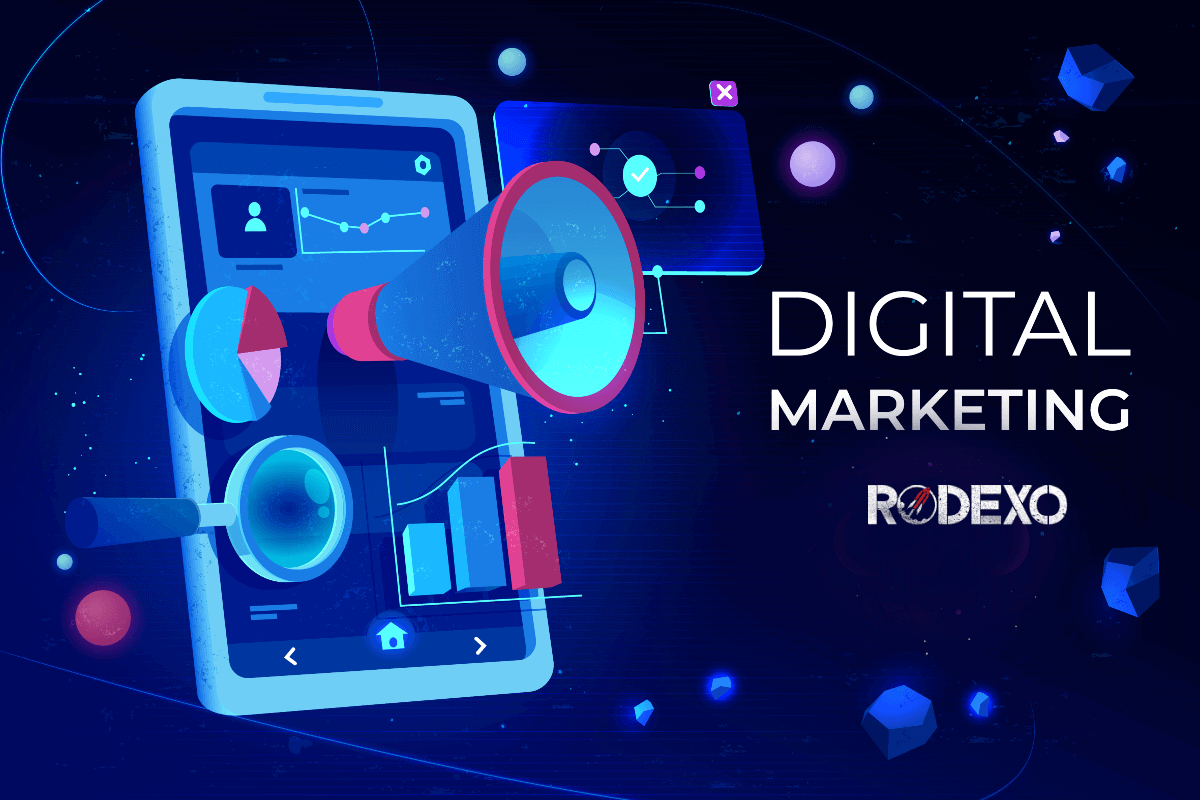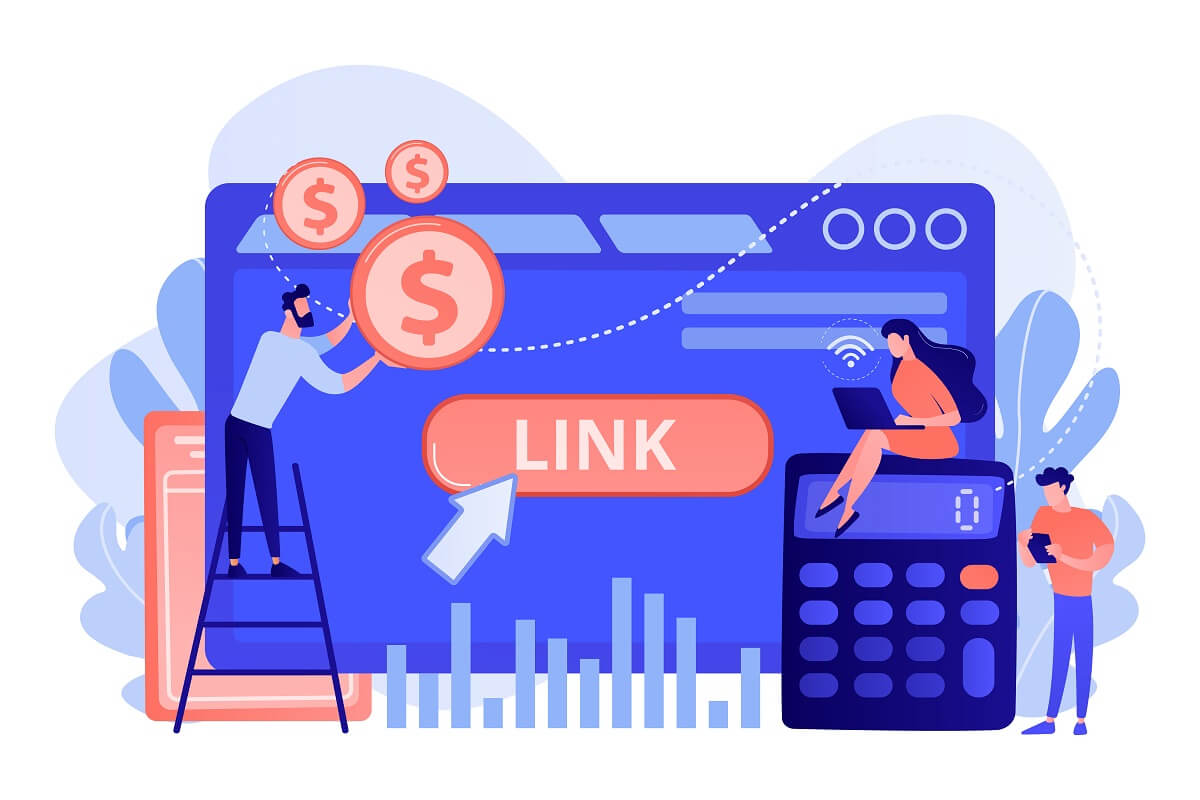The difference between SEO and SEM is simply that Search Engine Optimisation (SEO) is an element of Search Engine Marketing (SEM). Both processes aim to increase visibility in search engines and increase the level of traffic to your site.
SEO is optimising your website to get higher rankings in the organic search results. With a higher rank, your business will appear sooner in the search results for associated keywords. While SEM includes SEO, it also has other elements such as PPC. Pay Per Click is paying directly to Google, Bing, or any search engine to place ads on searches for certain words. A firm using PPC will have their ad show in the first 1 or 2 on Google. From then on, it is the SEO that will decide on placement.
SEO VS SEM
A Google search engine’s results page (SERP) includes two types of results. Paid advertising (PPC) and organic search results (SEO).
Paid results are usually displayed with the letters’ AD’ to help users distinguish them from the organic results. PPC Ads are above and below the organic search results on the first page.
To get your website on top of the ‘paid search results,’ you need to use PPC (pay per click) ads to bid and win A top position for a specific key term or word. The benefit of PPC versus traditional forms of direct advertising is that you only pay for a click, meaning firms incur cost only if the ad is clicked to your site.
All mainstream search engines have an easy to use PPC platform to manage your ads on their search engine. Each search engine has a tool for PPC. Google has Google Ads; Bing has Microsoft Advertising, etc.
Other than PPC, you have organic results. To make your way to the top of organic results, you must use SEO. Having an SEO friendly website and publishing relevant content that satisfies user intent for a particular search term will boost your search placement.
Both SEO and PPC are elements of Search Engine Marketing, SEM for short. The diagram below shows how the terms relate to one another.
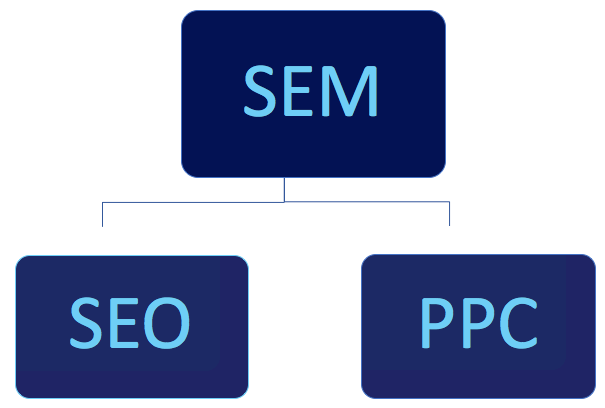
To compare SEO and SEM, it is essential to start with their definition to clarify the difference.
Search Engine Optimisation (SEO)
SEO is the process of optimising your website to get ‘free traffic’ from search engines. Traffic coming from SEO to your site is known as organic traffic. The best way to look at SEO is as an investment for long term benefit. By putting time into optimising your website, you will start to see benefits after about six months, but this effect will be long-lasting, increasing your traffic into the future.
SEO is essential because most search traffic will select a page in the organic results section. So, if you want to get long-lasting free traffic from search engines, your website needs to appear in one of the top 5 organic positions.
Search engine crawlers quickly read an optimised website. This increases the chances of ranking higher in SERPS (search engine results pages).
There are three parts to a successful SEO campaign: Technical SEO, on-page SEO, and off-page SEO. Using a combination of all three of these is the most effective way of increasing organic search performance.
Technical SEO is the process of optimising your website for the crawling and indexing carried out by Search engines. With technical SEO, you ensure that search engine bots can crawl and index your website without any problems.
The main components of technical SEO are:
- XML Sitemaps
- Canonical URLs
- Page speed
- Mobile-friendliness or Responsive
- Site structure
- Website security (SSL)
On-site SEO is an optimisation method you can apply on individual pages and content to optimise specific keywords. When search engine crawlers find these keywords on your site, they are more likely to index them correctly, increasing the accuracy of what search words you appear with.
The key elements of on-page SEO are:
- Page title optimisation
- URL optimisation
- Meta description optimisation
- Image optimisation (Descriptive naming of pictures)
- Content optimisation
- H1 optimisation
Off-site SEO refers to the process of attaining backlinks from other websites. By increasing your amount of references, you are increasing your website’s trust in the eyes of search engines. These references are also known as backlinks.
This element of SEO tends to be the most difficult for website owners to understand. It helps to think of it in terms of a real-world example. You are the owner of a small auto repair shop in Ireland, suddenly Mercedes starts to recommend you to all their customers for repairs as they see the quality of your work. When people see that Mercedes trusts you to carry out repairs, it increases the chances that others will charge you too. References, in the case of your site, are links on other websites connected to your site. That is also the reason why off-site SEO is referred to as link building.
It’s not only a matter of how many links you have pointed to your website but also from where these links are coming from. Backlinks from low-quality websites will not help increase search engines’ trust.
Search Engine Marketing (SEM)
Search Engine Marketing is an element of digital marketing that increases your prevalence in searches by getting organic traffic through SEO or paid traffic through PPC advertising.
SEO is an element of SEM, which is a subset of digital marketing.
Digital Marketing includes other methods to increase your website’s traffic besides SEM and SEO, such as social media marketing, email marketing, and content marketing.
Why is SEM traffic substantial?
Search Engine Marketing traffic is considered the most important source of Internet traffic because it is targeted.
When customers click on a website from the search results or click on an ad, they are more likely to use your products or buy your service. SEM traffic is more valuable than any other traffic source as the people visiting your site were already searching for something you feature on your site. The people on your site are there because you are selling what they are buying!
SEO Vs. SEM: Which is better?
Often digital marketers will refer to SEM as PPC specifically. They consider paid search advertising as the same as SEM, despite it only being an SEM element in reality. SEO, although an aspect of SEM, is often seen as a separate element of digital marketing.
Cost
Organic SEO is the best marketing tactic for long term benefit. Websites with high organic result performance for their target keywords get free traffic 24/7.
Websites that use PPC still get targeted traffic from search engines, but they have to pay for each click. Once the PPC payment stop, traffic disappears.
It’s important to note that although SEO traffic is generally considered free, it takes a lot of time, effort, and money to get to the top organic results for popular keywords.
The search space is highly competitive for all industries, and you need to make a considerable investment to secure one of the top positions.
You will have to consistently create high-quality content, hire an SEO expert to help with the SEO process, and optimise your website with hundreds of SEO rules.
So, which is more effective cost-wise, SEO, or SEM? SEO. It might require a higher initial investment but once highly ranked for your keywords that matter for your business, you can enjoy the ‘free traffic’ without worrying about advertising budgets.
Time
Another significant difference between SEO and SEM is that PPC is almost instant, while it takes around six months for SEO to work and generate results.
So, which is better depends on your overall digital marketing goals. If you want to get traffic fast for a promotional event, the best option would be PPC. If you wish to long-lasting online traffic without relying on PPC, SEO is the way to go.
For any more information on what would work for your business, contact us.

